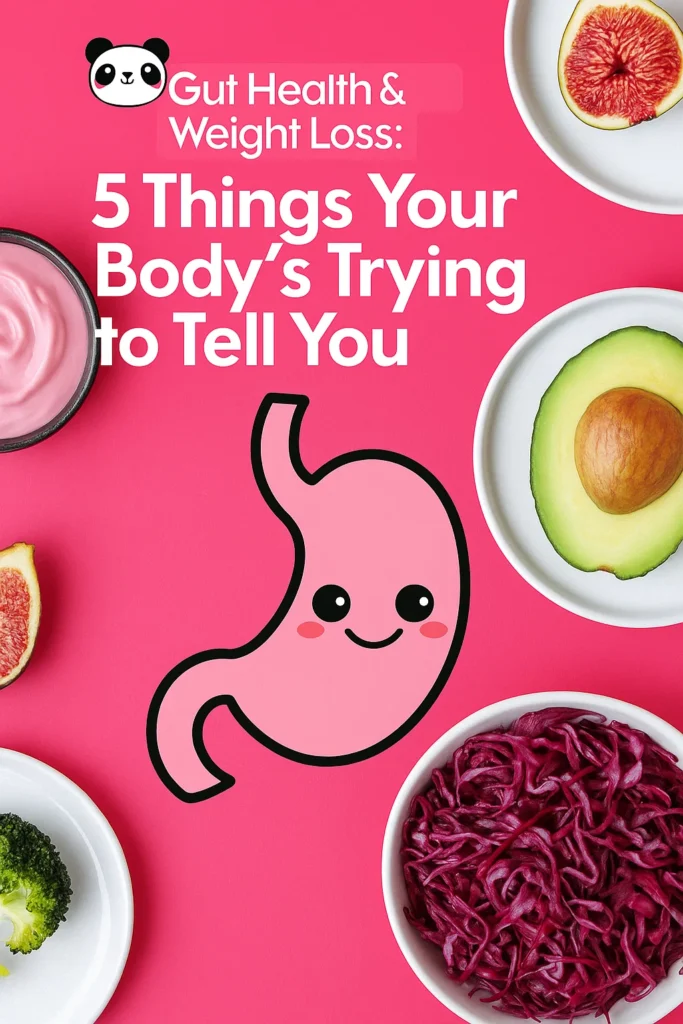Gut health is directly linked to many aspects of our well-being, including weight. The digestive system does more than process food. It houses trillions of bacteria that help regulate how we gain, lose, and manage weight. These bacteria form the gut microbiome, which plays a central role in digestion, nutrient absorption, and energy use. Understanding how gut health affects weight gives us tools to improve health through diet and lifestyle choices.
Weight management is often viewed only in terms of calories in and calories out. While diet and exercise are vital, gut health is a less obvious factor that can influence success. A well-balanced gut can support fat burning, reduce cravings, and improve metabolism.
In this article, we will discuss why gut health matters in weight control. You’ll learn how gut health affects your weight and what simple actions you can take to support both.
What Is Gut Health?
The gut microbiome is a group of bacteria, viruses, and fungi living in the digestive tract. Most of these microbes are found in the large intestine.
While some bacteria cause illness, many support digestion and protect against harmful invaders. A healthy microbiome has a diverse mix of bacteria that work together to support the body.
These microbes break down parts of food that the stomach and small intestine can’t digest. They help extract vitamins, produce short-chain fatty acids, and support the immune system.
They also influence how the body stores fat, responds to hunger, and uses energy. Because of this, the balance of good and bad bacteria in the gut affects weight and overall health.
Your gut is home to trillions of bacteria. These bacteria help:
- Break down food
- Absorb nutrients
- Support your immune system.
- Communicate with your brain.
When your gut bacteria are in balance, your body runs better. But when that balance is off, it can affect your digestion, energy, mood, and weight.
Signs of Good and Poor Gut Health
People with good gut health usually have regular digestion, less bloating, and stable energy. Poor gut health often shows up as gas, constipation, fatigue, or frequent illness. These symptoms can signal that the bacteria in the gut are not in balance.
Stress, processed food, antibiotics, and poor sleep can all damage gut health. These factors reduce the number of helpful bacteria and allow harmful ones to grow. This imbalance can affect digestion, mood, and weight.
How Gut Health Impacts Your Weight
Gut health affects more than digestion; it plays a significant role in how your body manages weight. From metabolism to hunger control, the balance of bacteria in your gut can influence whether you gain or lose fat.
Below are four key ways gut health connects directly to weight.
- Gut Bacteria Affect Metabolism
Gut bacteria help convert food into usable energy. A healthy gut supports a faster metabolism. But when harmful bacteria grow too much, your body may store more fat instead of using it for fuel.
- The Gut Talks to Your Brain
Your gut and brain are in constant contact. They use hormones to send messages like:
- “I’m full, stop eating”
- “I’m hungry, eat now”
If your gut bacteria are out of balance, these messages can get mixed up. You might feel hungry even after eating or crave more food than you need.
- Inflammation From the Gut Affects Fat Storage
Harmful gut bacteria can trigger inflammation. This makes it harder for your body to use insulin properly. When this happens, your body stores more fat, especially around your stomach.
- Nutrient Absorption Plays a Role
Your body needs vitamins and minerals to work well, and your gut is responsible for absorbing them. When your gut isn’t healthy, it may not absorb nutrients properly, leading to low energy, food cravings, and a slower metabolism.
How to Support Gut Health and Manage Weight
Let’s look at practical steps that help both your gut and your weight.
- Eat More Fibre
Fibre feeds good gut bacteria. It also keeps you full longer and supports regular digestion. Fibre-rich foods include:
- Oats
- Lentils
- Berries
- Broccoli
- Apples
Pro tip: Aim for at least 25–30 grams of fibre each day.
- Add Probiotic Foods to Your Diet
Probiotics are live bacteria that help balance your gut. You can find them in:
- Yogurt
- Kefir
- Kimchi
- Sauerkraut
- Miso
Easy idea: Add a spoonful of fermented veggies to lunch or dinner.
- Avoid Gut-Damaging Foods
Highly processed foods and added sugars feed the wrong bacteria, which can upset your gut balance and increase your chances of weight gain.
Better choices: Swap processed snacks for whole foods like nuts, fruits, or seeds.
- Get Moving
Regular exercise supports healthy digestion and helps keep your gut bacteria diverse. Even a daily walk can make a difference.
Tip: Aim for 30 minutes of light to moderate activity most days.
- Rebuild After Antibiotics
Antibiotics treat infections, but they also wipe out good bacteria. If you’ve taken antibiotics recently, focus on rebuilding your gut with probiotics and fibre.
Recovery tip: Eat probiotic-rich foods daily for a few weeks post-treatment.
Probiotics and Prebiotics
Understanding Probiotics
Probiotics are live bacteria found in certain foods and supplements. They can help restore gut balance by adding good bacteria.
Common probiotic foods include yogurt, kefir, miso, and fermented vegetables. These can help with digestion and improve gut function.
Supplements may be useful for people with gut problems, especially after taking antibiotics. However, not all probiotics are the same.
Different strains support different parts of health, so it is helpful to choose ones known to support digestion and weight management.
The Role of Prebiotics
Prebiotics are plant fibers that feed good bacteria. Foods like garlic, onions, bananas, asparagus, and oats contain prebiotics.
These help bacteria grow and produce short-chain fatty acids. Prebiotics do not contain bacteria themselves but support the bacteria already in the gut.
Eating prebiotic foods along with probiotic foods helps maintain a strong, balanced gut microbiome. This supports both gut health and weight control.
Diet and Its Impact on Gut Health
Foods That Support Gut Health
Eating fibre-rich foods feeds the good bacteria in the gut. Vegetables, fruits, legumes, nuts, and whole grains are high in fibre. These foods help increase the number and variety of helpful bacteria.
As these bacteria grow, they make short-chain fatty acids that support weight loss and gut health.
Fermented foods also help. Yogurt, kefir, sauerkraut, kimchi, and kombucha contain live bacteria that improve the gut microbiome. These foods add healthy bacteria and help maintain balance in the gut.
Foods That Harm Gut Health
Processed foods, refined sugars, and artificial additives can harm gut bacteria. These foods reduce microbial diversity and allow harmful bacteria to grow. A diet high in processed food may lead to weight gain, inflammation, and slower metabolism.
Artificial sweeteners can also disrupt the gut microbiome. Though they contain few calories, they may lead to weight gain by changing how the body processes sugar.
To support gut health and manage weight, it’s better to eat whole, unprocessed foods.
The Gut-Brain Axis and Emotional Eating
Gut-Brain Communication
The gut and brain communicate through nerve signals, hormones, and the immune system. This connection is called the gut-brain axis. When the gut is healthy, it sends positive signals to the brain. When the gut is out of balance, it can cause mood issues and affect appetite.
Some gut bacteria help produce mood-related chemicals like serotonin. Poor gut health may lead to low mood or anxiety, which can trigger emotional eating. Improving gut health may support a better mood and reduce the urge to eat for comfort.
Reducing Stress-Driven Eating
People under stress may turn to food for relief. This often involves sugary or high-fat snacks. A healthy gut can lower stress responses and support stable emotions. This makes it easier to avoid emotional eating and keep a steady weight.
Improving sleep, practicing relaxation techniques, and spending time outside all support gut health and mood. These habits also help reduce cravings and improve self-control.
Long-Term Gut Health for Lasting Weight Control
Building Sustainable Habits
To maintain a healthy gut and steady weight, focus on long-term habits. Eat a diet rich in fiber and whole foods. Include fermented and prebiotic-rich foods often. Avoid processed foods and reduce added sugars.
Sleep well, move daily, and manage stress. These actions help keep gut bacteria in balance and support healthy weight over time. Avoid quick fixes or extreme diets. A steady, balanced approach works better for lasting results.
Listening to the Body
Pay attention to how food and habits affect digestion and energy. Bloating, fatigue, or cravings can signal poor gut health. Adjusting diet and habits based on these signals helps improve both gut and weight.
Small changes can make a big difference. Replacing one processed meal a day with a whole-food meal improves gut bacteria. Over time, these changes support better health and easier weight control.

Gut Health vs. Weight Impact
A balanced gut helps regulate metabolism, control hunger, and ensure proper nutrient absorption. When the gut is healthy, it efficiently processes food and burns calories.
However, an imbalance in gut bacteria can disrupt these processes, slowing metabolism, increasing cravings, and promoting fat storage.
Maintaining a healthy gut is key to supporting a healthy weight and making it easier for your body to manage fat.
| Gut Factor | Weight Impact |
| Balanced bacteria | Better metabolism, less fat storage |
| Hormone signaling | Appetite control |
| Inflammation | Increased belly fat |
| Nutrient absorption | Higher energy, fewer cravings |
| Fiber intake | Fullness and digestion |
| Probiotics | Restores healthy balance |
Final Words
Gut health plays a bigger role in weight control than you might expect. By supporting your gut with the right foods and daily habits, you help your body work better, from digestion to fat burning.
FAQs
Can gut health really affect weight loss?
Yes, an imbalanced gut can slow metabolism, increase hunger, and promote fat storage, making weight loss harder.
How do gut bacteria influence hunger?
Gut bacteria produce hormones that regulate hunger. An imbalance can lead to mixed signals, causing overeating or constant hunger.
What foods support a healthy gut?
Foods rich in fibre, probiotics (like yoghurt and kimchi), and prebiotics (such as garlic and onions) help maintain a balanced gut.
Can probiotics help with weight management?
Yes, probiotics support healthy gut bacteria, which may improve metabolism and reduce fat storage.
How can I improve my gut health?
Eating a balanced diet with fibre and fermented foods, staying active, and avoiding processed foods can all improve gut health.









